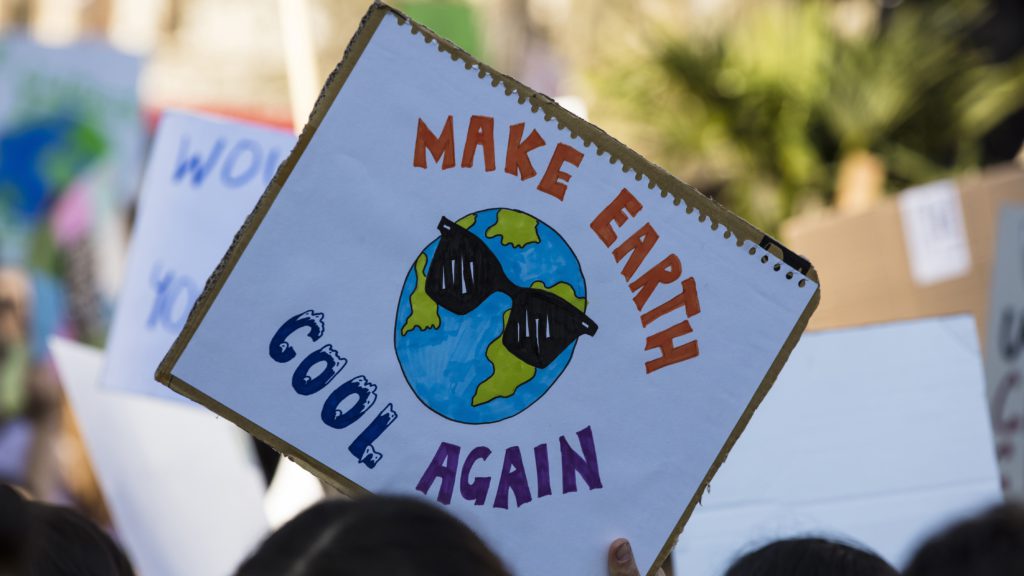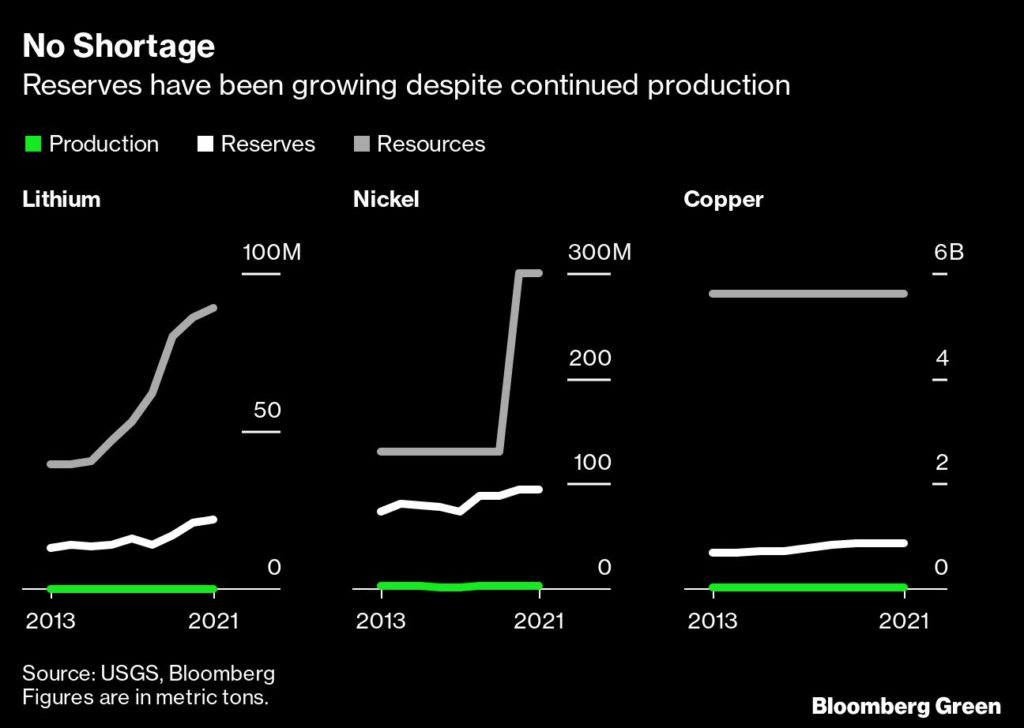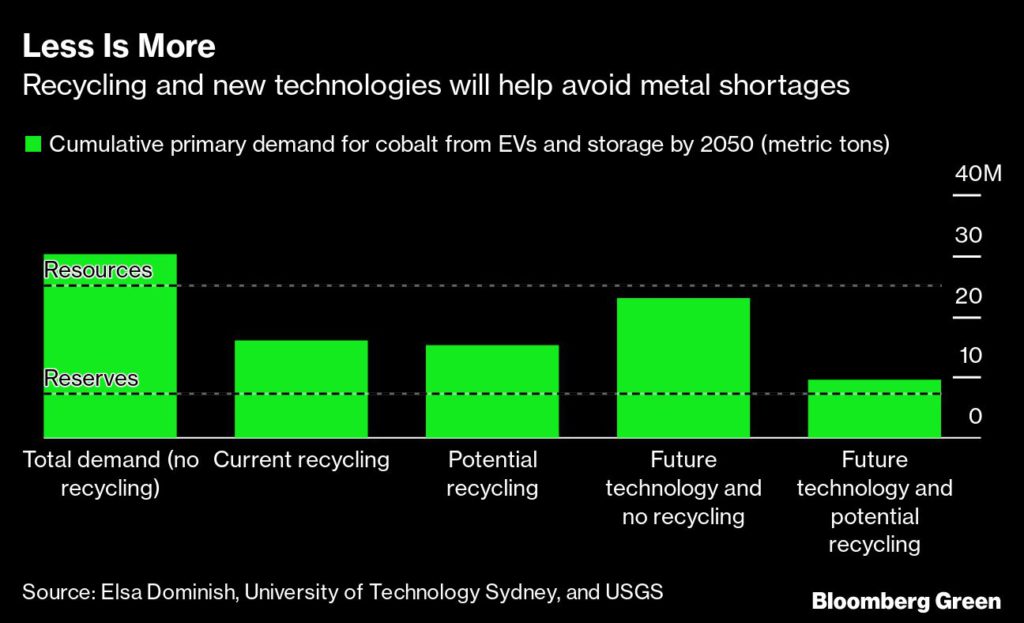
The world isn’t cutting greenhouse gas emissions with anything like the speed required to avoid the most dangerous effects of climate change, as the latest United Nations climate report published this month affirmed. Despite this, it’s become a trope of sorts to warn that we’re in danger of going too fast.
The overlapping drivers and effects of the Russian invasion of Ukraine, Covid-related supply chain disruptions, and rising inflation have all fueled a set of haphazard narratives that the clean energy transition will be highly inflationary–or, alternatively, that it will stall.
The worries usually center on the implications of soaring demand for commodities such as cobalt, lithium, nickel and copper that are used for electric vehicles, solar PV cells, wind turbines and electrical grids. Isabel Schnabel of Germany’s Bundesbank spoke in January about the inflationary effects of green energy; although she later acknowledged that this had to be seen alongside inflationary effects of fossil fuels and of climate change itself.
These warnings usually cite a fact about the resources required to build new energy infrastructure. The IEA for example highlights that an electric vehicle uses six times as much metals as a fossil fuel car and that wind farms use nine times as much as a gas-fired plant. The shock value of that analysis doesn’t entirely withstand close scrutiny. For one thing, it fails to acknowledge the absence of fuel from the equation; an internal combustion pickup truck will use $25,000 of fuel in a decade, under the Energy Information Agency’s low gasoline price scenario.
It also must contend with economics 101: more demand and higher prices will engender more supply. Running out of commodities is a popular fear, but the past couple of hundred years have seen humans develop ever more efficient ways of finding things we want under the ground and pulling them out.
Examples are abundant. Consider the U.S. shale oil boom of the past decade: the country’s oil output more than doubled between 2008 and 2018. Peak oil supply – or at least, a secular shift to higher priced crude–was a credible threat just over a decade ago. Both the “resources” and the economically recoverable “reserves” of transition minerals have tended to grow over time, even as production continues. “Economically viable reserves have been growing despite continued production growth,” the IEA notes. Data from the United States Geological Survey bears this out:

Innovation also helps on the demand side. Electric car batteries today use far less cobalt than they did a decade ago, and researchers are confident in the prospects for doing without that scarce mineral altogether.
There’s recycling to consider, too. Australian researchers projected minerals demand in a scenario for meeting the Paris Agreement goals that includes a 100% renewable energy system. They found that plausible improvements in both technology and recycling can reduce cobalt demand by two-thirds, putting it well within the range of current resources, and not too far above current reserves.

It’s true that some mines for the metals and minerals used in zero emissions energy systems will take years to come online. The IEA estimates four to seven years for lithium, depending on whether it is in Australia or South America. Copper mines can take well over a decade. It’s easy to see that this could be a problem if demand ramps up unexpectedly fast.
Despite all this, when IMF staff tried to model price effects of a booming demand for minerals, the findings were not so dramatic. Looking at the requirements for copper, lithium, cobalt, and nickel to meet net zero emissions by mid-century, they found real prices mostly wouldn’t exceed levels reached in earlier price spikes, although they might persist at high levels for longer.
Finally, as the IEA points out, there are “significant differences” in supply crunches for oil versus minerals: an oil supply disruption affects everyone driving passenger cars, diesel-fueled trucks etc, while a minerals supply crunch only affects the supply of new EVs–not those already using them.
The pitfalls of cutting emissions have to be viewed in a broader context. A rush for minerals to build the new energy infrastructure is only a temporary problem. The IMF estimates 15 years of minerals squeeze; the IEA sees it as lasting closer to a decade. The hotter climate is by contrast likely to be irreversible on any time scale that humans can plan for.
The transition to a world that isn’t getting warmer means taking a bet that human ingenuity can optimize the relatively familiar challenges of extracting stuff from the ground, using and re-using it, and distributing the benefits. These are the sorts of challenges that the modern economy is very familiar with.
Ignoring transition means embracing a descent into an increasingly unstable climate. That’s something our modern society has very limited experience with — but what we do know is dire.
(By Kate Mackenzie)
(This column does not necessarily reflect the opinion of Bloomberg LP and its owners.)
Comments
BOB HALL
The clean energy transition requires users and law makers to realize that for every horsepower from conventional sources that we remove from service we will require a NEW horsepower of electricity. This is a must and must be in the equation FIRST. So build the clean plant first and then tear down (or mothball) the coal plant.
Recycling is a must for all commodities. Steel leads the way and that effort can be duplicated for all metals. The but is that recycling will not give us the initial supply required. That must come from Mother Earth. What is stopping us? It is not technology or innovation. It is the stable regulatory system required – worldwide Again all users and regulators need to get on this!
I love the sign. “Make Earth Cool Again”. .CCUS has a place in that!